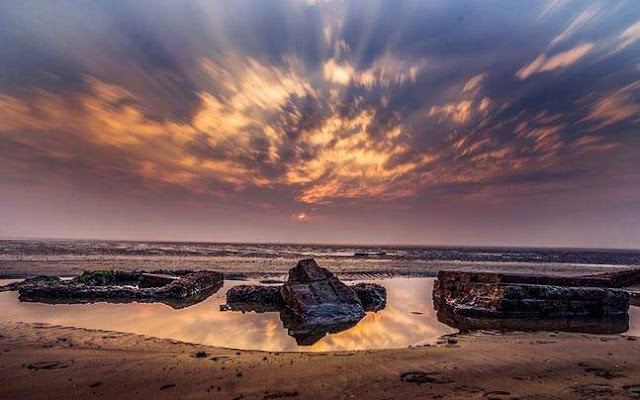The Sea of Galilee (Lake Tiberias)
is a magnificent geographical marvel surrounded by pretty rural agricultural
settlements. It is not a real sea - it is called a sea because of tradition. Lake
Tiberias is largest fresh water lake in Israel’s. The lake measures 53 km in
circumference 21KM north-south and 141 feet deep. The Lake Tiberias (Seas of
Galilee) is partly fed by underground springs related to the Jordan sector of
the Great Rift Valley. The maximum water comes from the Jordan River. Which is
winding course can be seen draining the south end of the lake at bottom. The Jordan
River rises on the slopes of Mount Hermon, on the border between Syria and
Lebanon, and flows southward through northern Israel to the Sea of Galilee. Thus,
the other streams and wadis (seasonal watercourses) flow into the lake from the
hills of Galilee.
Lake Tiberias is also famous as
the Sea of Tiberias, Lake of Gennesaret, Lake Kinneret, and the Sea of Galilee.
This is the lowest freshwater lake on Earth and the second-lowest lake in the
world after the Dead Sea. Lake Tiberias is situated between Golan Heights and
Galilee region in the Jordan Rift Valley. This is area has the history of
volcanic history evident by the abundant basalt and igneous rocks that define
the geology of Galilee. The Lake Tiberias warm water supports various flora and
fauna. That supported commercial fishery for over 20 years. The notable fish
species to be found include damselfish, scaleless blennies, catfish,
mouthbreeders, and barbels. Sea of Galilee is one of the earliest settled areas
and brags archaeological ruins sitting together with some of the first
pioneering settlements in Israel, as well as religious sites, modern cities,
and endless outdoor pursuits.
Sea of Galilee has severe drought
as of 2018 from many years. The Lake Tiberias is expected to get to the black
line the lowest depth from which irreversible damage start and no water can be
pumped out anymore. However, in Sep 2018 the Israeli energy and water office
announced a project to purr desalinated water from the Mediterranean Sea into
the Sea of Galilee. They will be using an underground tunnel expected to be
largest of its kind done in Israel. This project will transfer half of the
Mediterranean desalted water and will push 300 to 500 Million cubic litters of
water per year. Three-quarters of the drinking water consumed by Israeli
households comes from these desalination plants.
The Sea of Galilee, has suffered
from four consecutive years of rain shortages, make the water situation is
serious. The lake has fallen to its lowest level in 100 years. The Israeli
government monitors water levels and publishes the results daily at official web
site. The Lake Tiberias is at risk of becoming irreversibly salinized by the salt
water springs under the lake. Which are held in check by the weight of the
freshwater on top of them? Tourism around the Lake Tiberias is an important
economic branch.
The religious and historical
sites draw both local and foreign tourists. Due to Lake sheltered location, low
elevation, the winters are mild, with temperatures averaging 57 °F in January.
The summers are hot, with temperatures averaging 88 °F (31 °C). Also the
absence of freezing temperatures has facilitated the cultivation of bananas,
dates, citrus fruit, and vegetables. The shortage of rainfall is affecting
agriculture, the environment and animal life in the nearby area. About five
miles on the east side of Sea of Galilee
there is Hamat Gader situated – a hot springs one of Israel’s most popular
attractions. With mineral springs of up to 50 degrees, there have been ancient
baths here for almost 2000 years. There is also an alligator and rare exotic
bird reserve. The region also has loads of hiking trails, including Sea of
Galilee Trail which encircles the lake.
Lake Tiberias in Islam
One of major point is mentioned
in Islam that sea Galilee will drying up actually is one of the signs of end of
times! The disappearing Sea of Galilee and Emergence of
DAJJAL the Anti-Christ, Prophet Muhammed (PBUH) told humans 1400 years ago! When
the Sea of Galilee dries up the Prophet Isa (A.S) will return and Gog and Magog
will drink the entire water and then thy will be destroyed. The prophecy of the
drying up of Lake Tiberias (Sea of Galilee) is established from two authenticHadith





















































